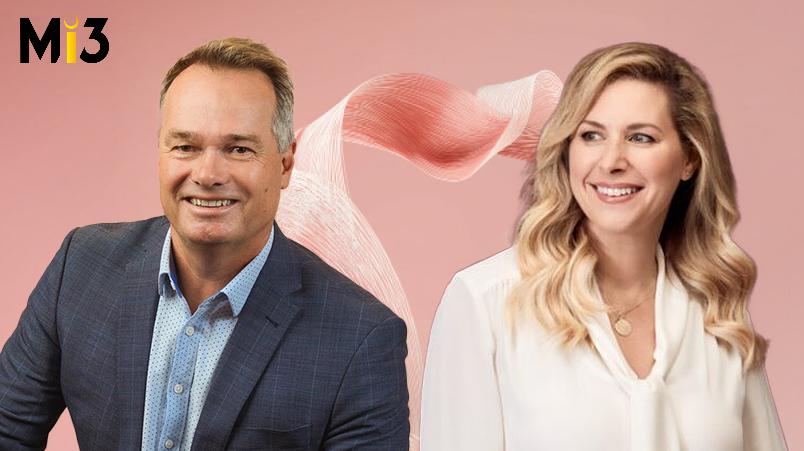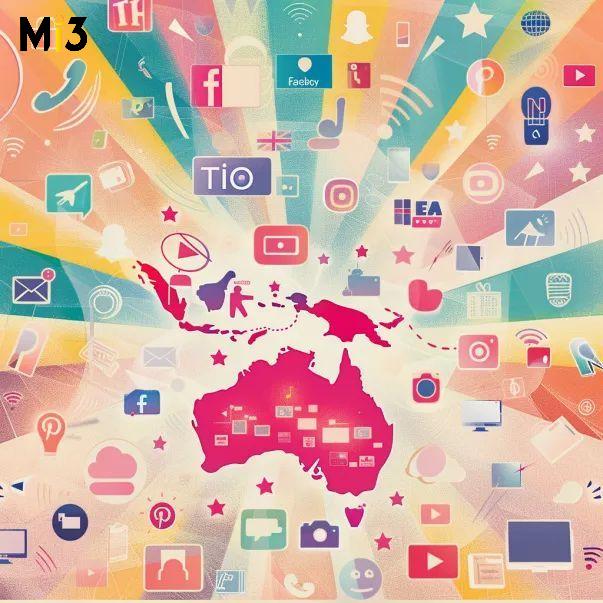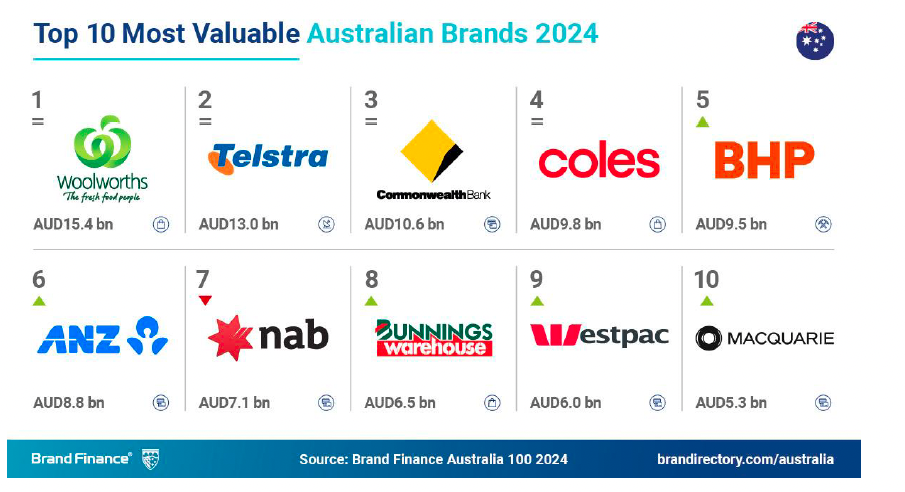‘Every brand is on an experience escalator’ of comparison to everyone else, says Michelle Klein: Here’s how the IAG marketing and customer chief and her digital business counterpart are aligning

It doesn’t matter if you’re providing content on-demand, banking services, a retail shopfront, or insurance: The increasingly frictionless, personalised experiences customers are getting through advancing digital and technology capability has put every brand on an “experience escalator” of comparison to everyone else, according to IAG’s chief customer and marketing officer, Michelle Klein.
Which is why Klein, in partnership with EGM of digital business, Nandor Locher, has spent the past two years jointly working on an outcomes-led approach to delivering digital and customer experiences across the ASX-listed giant. “We’re a heritage, legacy business, so we’re looking to drive some of that experience thinking and acceleration to meet that customer where they are,” she says.
Finding marketing-technology alignment that can drive such customer outcomes is taking different shapes and structures in Australian businesses, as is made plain in the new CMO Awards special report, From Silos to Synergies: Unlocking the CMO-CIO partnership, supported by partners, Adobe, Publicis Groupe and News Australia.
In IAG’s case, both Klein and Locher were brought in from other sectors (Klein from Meta, Locher from Woolworths and before that, Qantas) under a restructure initiated by IAG CEO, Julie Batch, with expanded, complementary remits to traditional marketing and digital functional leadership. They’re now joined at the hip not just to improve customer engagements through technology, but also reimagine them.
Locher describes himself as translator, running digital business as the bridge between back-end IT and business functions at IAG – customer, distribution, claims or supply chain – as insurance finally undergoes the disruptive digital shift many industries have already gone through.
“In many ways, I think the insurance industry, compared to other industries I’ve been part of, has been somewhat ringfenced and protected from outside-in disruptors like native digital companies – just take retail with Amazon entering, or travel and intermediation of the customer. Insurance is the next industry to be disrupted by these types of players. The use of technology, data and digital integration with customer experience is critical,” he comments.
Yet whatever construct IAG has put him in, Locher sees formal structure as secondary to cross-functional engagement and alignment to a common goal of customer. “You can organise and construct your organisation a thousand ways, and it will never be perfect. What is important, and what we started seeing, is leaders across the spectrum bringing together their capabilities to create teams that deliver on an outcome. And that outcome needs to be aligned with the customer in one way or another, be that customer journey stage, or line of product. That is the fundamental part,” he says.
'A Help Company' became this galvanising cry, both internally and externally. So internally, if you apply that, what would A Help Company do to tech and ops? That got us the acceleration required to launch a lot of new experiences in time last year when this idea debuted in market.”
Insurance to assurance
Providing IAG with a strategic North Star is Klein’s vision to evolve NRMA from insurance brand to ‘A Help Company’. The brand positioning idea was first envisaged as the company looked at how to celebrate its centenary. It’s since become a company-wide transformation trigger.
“A Help Company became this galvanising cry, both internally and externally. So internally, if you apply that, what would A Help Company do to tech and ops? That got us the acceleration required to launch a lot of new experiences in time last year when this idea debuted in market,” says Klein.
These digitally-fuelled initiatives include using NRMA’s scale to provide proactive extreme weather warnings by location, trialling DroneAssist roof inspections to give homeowners better information about how they maintain their homes, expanding wear and tear tips through HomeHealth Check, and enabling consumers to track claims in real time. Joint customer experience mapping work also resulted in Policy Snapshot for information about customer coverage, amplified digitised claim tracking, and scaled product propositions such as multi-policy discounts.
“At a higher level, if we keep asking ourselves that question – ‘What would A Help Company do?’ – we’re asking where we focus and how we prioritise, and what does success looks like. And that’s about customer outcomes,” Klein continues. “A customer might come in and we might have some really strong brand metrics at the top, but what’s happening in the middle? That’s where we need to work really closely together. What happens at the end and back again if they complain, or have a bad experience?”
A recent big milestone for both was revamping the website, which required a level of speed and responsiveness from the tech and op sides of the business. “Nandor was able to really help orchestrate, plus our collective teams, and to turn something around in a short period of time. That stuff is not easy,” says Klein. “There’s a lot of work going on around personalisation and one-to-one. Again, together, we’ve been able to remove some roadblocks and create a better experience for the customer.”
For Locher, another determining factor here is how relatively low-touch insurance is as an industry. “I think digital technology is increasingly offering new opportunities to create valuable, purposeful forms of engagement. ‘A Help’ company is a beautiful platform that is moving us from insurance to assurance. A lot of the assurance part is very difficult to do in a physical setting, and you need a digital setting for that. So it’s not just about replicating what we’ve done in the past in a smarter way. It’s also creating new opportunities for purposeful, meaningful customer engagements.”
You can organise and construct your organisation a thousand ways, and it will never be perfect. What is important, and what we started seeing, is leaders across the spectrum bringing together their capabilities to create teams that deliver on an outcome. And that outcome needs to be aligned with the customer in one way or another, be that customer journey stage, or line of product.
Finding unity in formal and informal mechanisms
Outside the cultural mantra, Locher and Klein’s leadership scorecards look 90 per cent the same as their executive peers, with an emphasis on data, growth – from a customer policy point of view, or in the way IAG creates value – cost and return on investment. Both also gauge team performing through customer experience scores such as NPS as well as compliance detractors.
“We’re in a pretty good shape from an alignment and OKR point of view, and there is a lot of power in that,” says Locher. “Also from a strategy point of view, I don’t have a ‘digital strategy’, I have a strategy that digitally enables business strategies. I shouldn’t just drive digital for the sake of it because we want to create nice websites and apps, it needs to be really coming from the top and needs to drive those business objectives and CX / customer experience. That’s critically important.”
For Klein, unity further comes from how leaders organically model the behaviour they want to see from their teams. “My opportunities are Nandor’s opportunities are the business’ opportunities, and vice versa – the problems are shared. Those are the organic behaviours that really influence and shape how teams then show up and support one another, regardless of whose remit it is, or responsibility,” she says.
However, the pair have also created joint formalised environments including the Customer Custodian Forum and Customer Council. An example of the custodian piece is teams working jointly on quote and buy optimisation on the website.
“That shouldn’t happen in absence of my writers, behavioural scientists and design thinkers. They were working together, but we created this space where Nandor and I are very much vocal and part of it, and we bring lots of different topics,” Klein explains.
Meanwhile, the Customer Council looks at customer themes, potential opportunities and problems to solve, and stretches to all parts of the business and to EGM level. “It’s ultimately about how we show up every day as leaders, and what the teams observe, then non-verbal interactions that are actually the most powerful,” says Klein.
As well as integrated planning, Locher stresses the work his team is doing on delivery in line with those aspirations. “Quarterly planning is facilitated through my team, but we bring Michelle’s team into line with those OKRs,” he says.
In addition, IAG has ‘communities of practice’, plus certain resources straddling both Locher’s and Klein’s teams, such as experience, strategic, service, user experience and brand design. “It doesn’t matter how you split it, that community comes together in a cross-functional sense and celebrates their craft and things holistically around that, regardless of where they report into,” says Locher. “That’s the counterpart of bringing teams together in a cross-functional way to work, and in a way where they also uplift their capability and their mindset in that space.”
Turning to future roles and delineation of responsibilities, Klein shies away from saying either marketing or digital must own certain skills and capabilities. “As those customer expectations continue to shift and change, you’ve got to know how to respond. Take the letter example: If you’re in the digital team, you also need to be looking at the copy and the imagery, and understanding the colour palette as intimately as if you’re in the brand team,” she comments. “If you’re in human-centered design team, those skills are going to be necessary for everyone to really understand.
“That’s not to say the future is a jack of all trades, because we need specialists. But the blending of skills and understanding doesn’t stop at the screen anymore… And when you think about the future of the metaverse, AI, virtual reality, what is the surface? Therefore, whether you’re marketing or giving information, we’re going to take another leap I think in our skillsets and have blending and capability uplift across the board.”
Locher uses the analogy of being fluent in several languages in a globalised world. “A good marketer speaks tech, speaks data, understands it to a sufficient degree, and vice versa. That leads to an uplifting of skills. That’s an ongoing journey, and that journey gets faster and faster,” he says.
Download your copy of the CMO Awards special report, From Silos to synergies: Unlocking the CMO-CIO partnership to read more about Treasury’s plans, as well as how CMOs and CIOs from Virgin Australia, IAG, Beyond Bank and University of Tasmania are joining forces to deliver customer and commercial results. This report is supported by our partners, Adobe, Publicis Groupe and News Australia.





